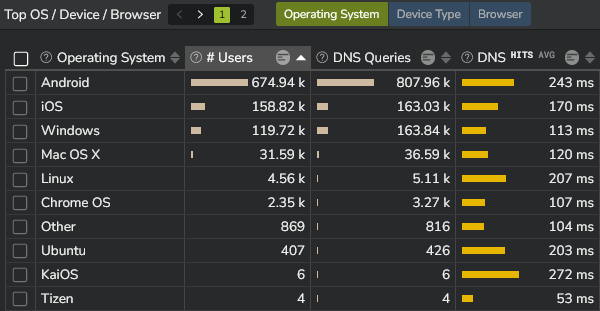DNS Resolution Time¶
Each time a browser connects to a web server to open a webpage, or requests additional resources making part of this webpage, it does this by using a URL (Uniform Resource Locator).

In order to connect to the host on which the webpages and related resources reside, the browser needs to get its IP address. This is because machines/network equipment can only handle network traffic based on IP addresses.
Resolving a host name, also called FQDN (Fully Qualified Domain Name) to an IP address is what we call a DNS (Domain Name Server) resolution. Seeing that this process must occur before connecting to a host, the DNS resolution process can significantly affect overall digital services performance.
Kadiska measures DNS resolution time.
From a W3C navigation timing standpoint, it is defined as domainLookupEnd - domainLookupStart

This value can be "0" in case the client device has the FQDN-IP mapping already available in its cache.
This metric is included in the "Network Setup" part of the "Navigation" and "Resources" levels.
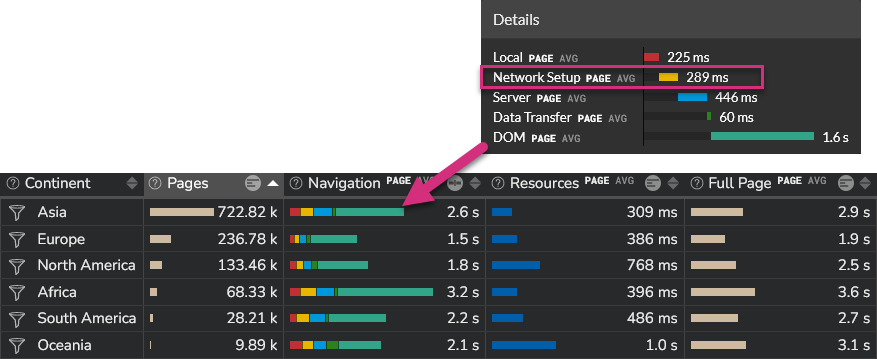
If you are looking for the DNS value itself, open a "Network" Section. In this section, DNS is first provided in a time series together with two other network metrics (CT and TLS).

This section also provides DNS values per location (continent, country, region and city):

This information is also provided by ISP (Internet Service Provider):

Finally, from the "Network" section, select "Network DNS" section to see:
- The DNS resolution time evolution together with the geolocation of DNS clients and corresponding DNS performances
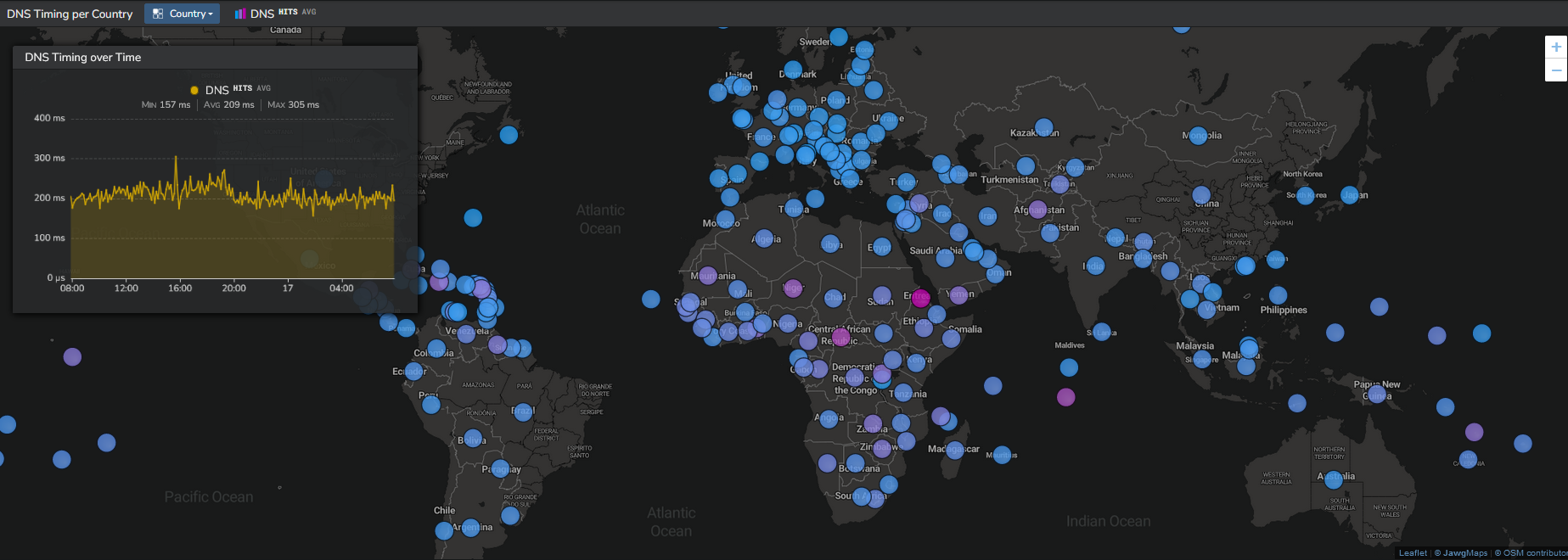
- The DNS resolution time distribution
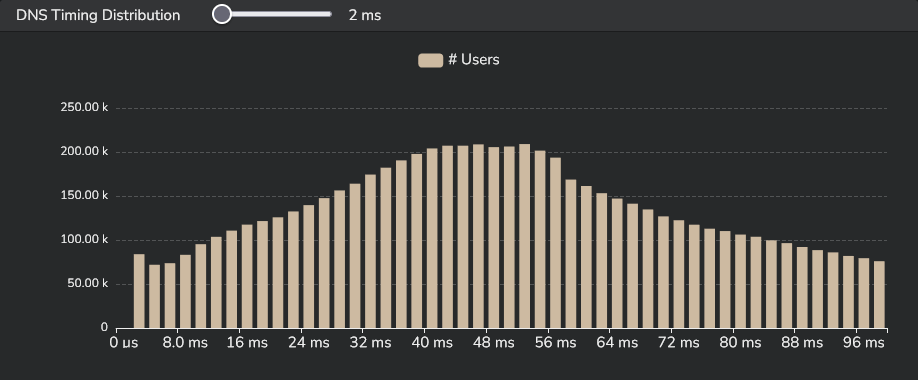
- The DNS resolution time performance per ISP
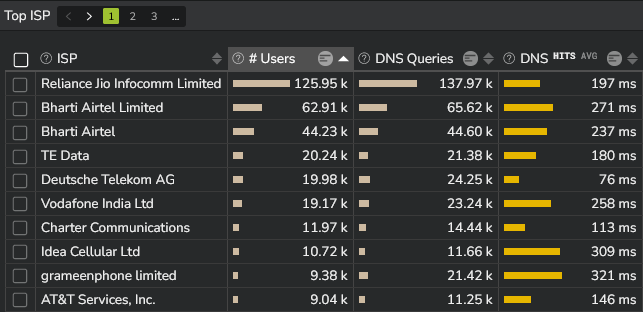
- The DNS resolution time performance per Host
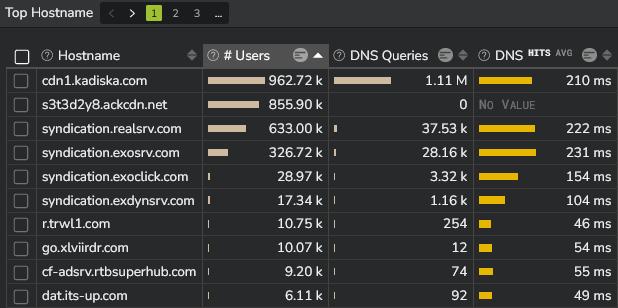
- The DNS resolution time performance per OS/Device/Browser
